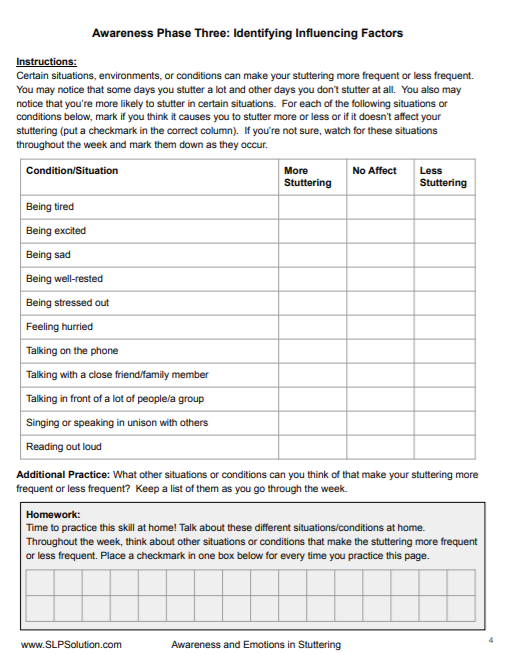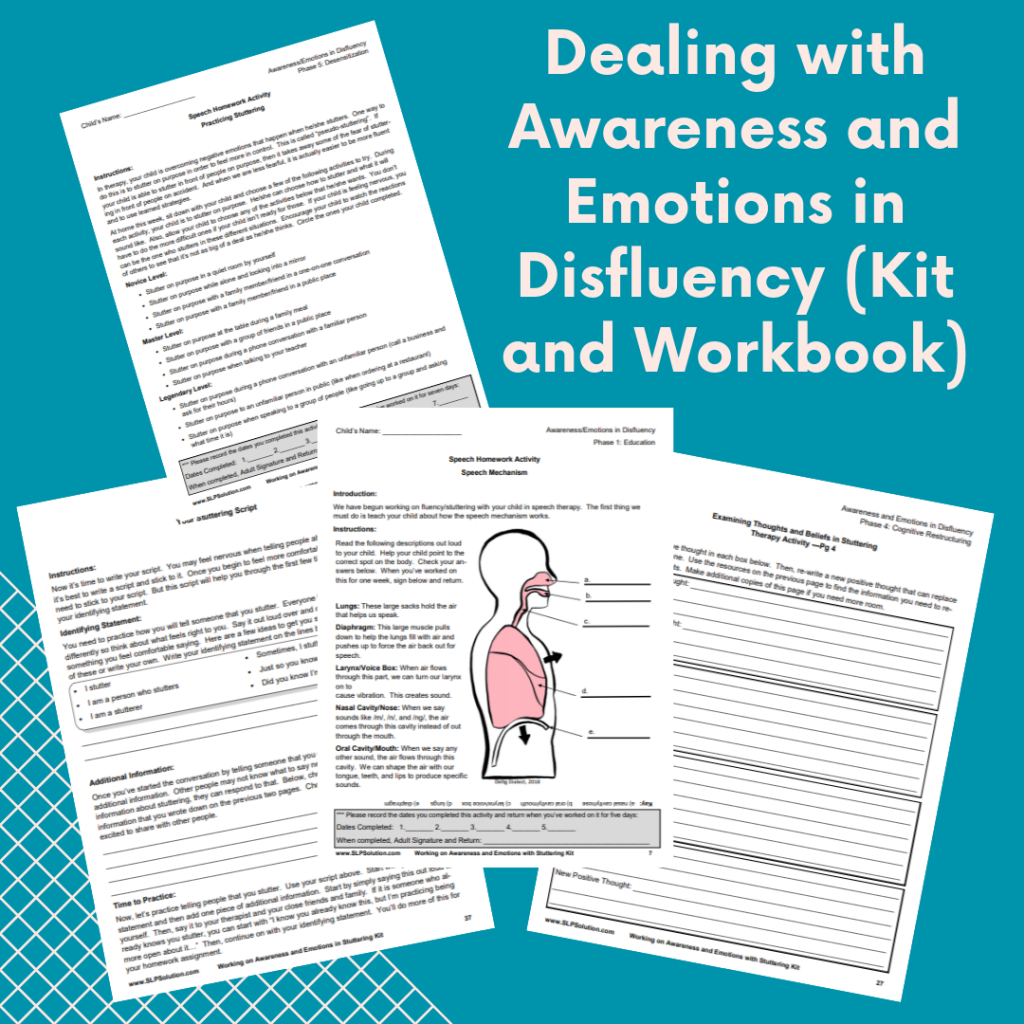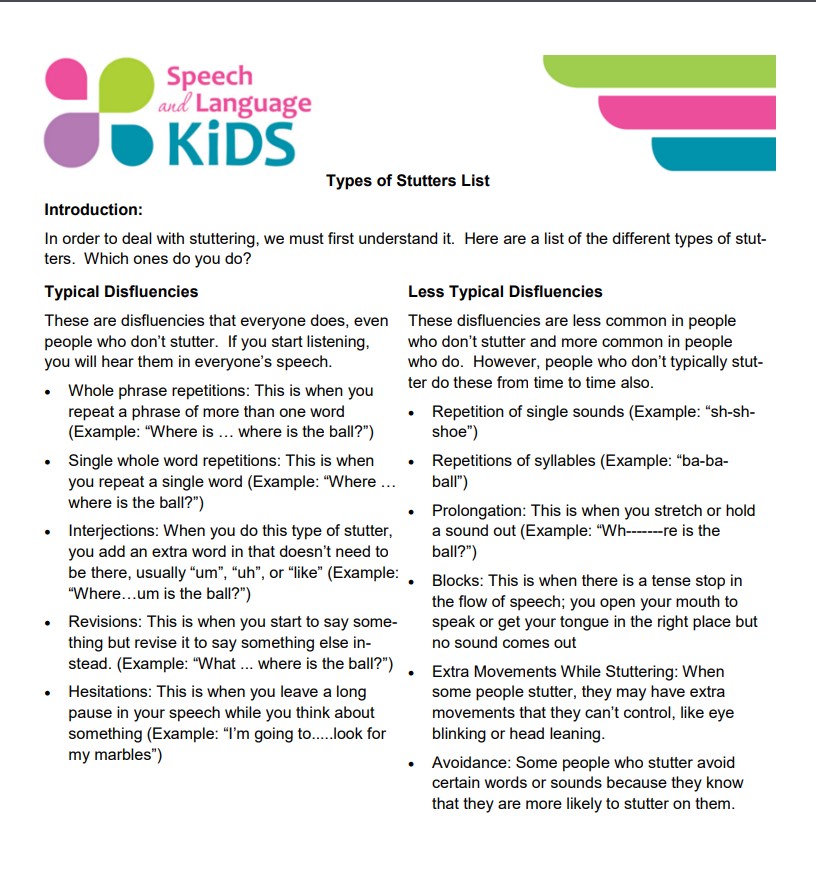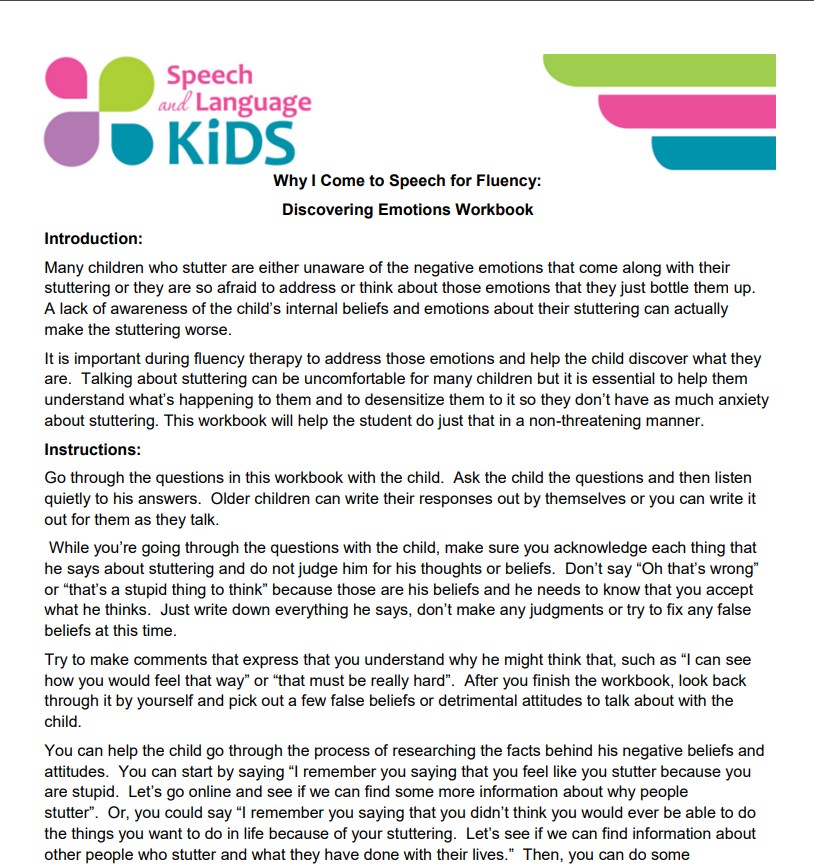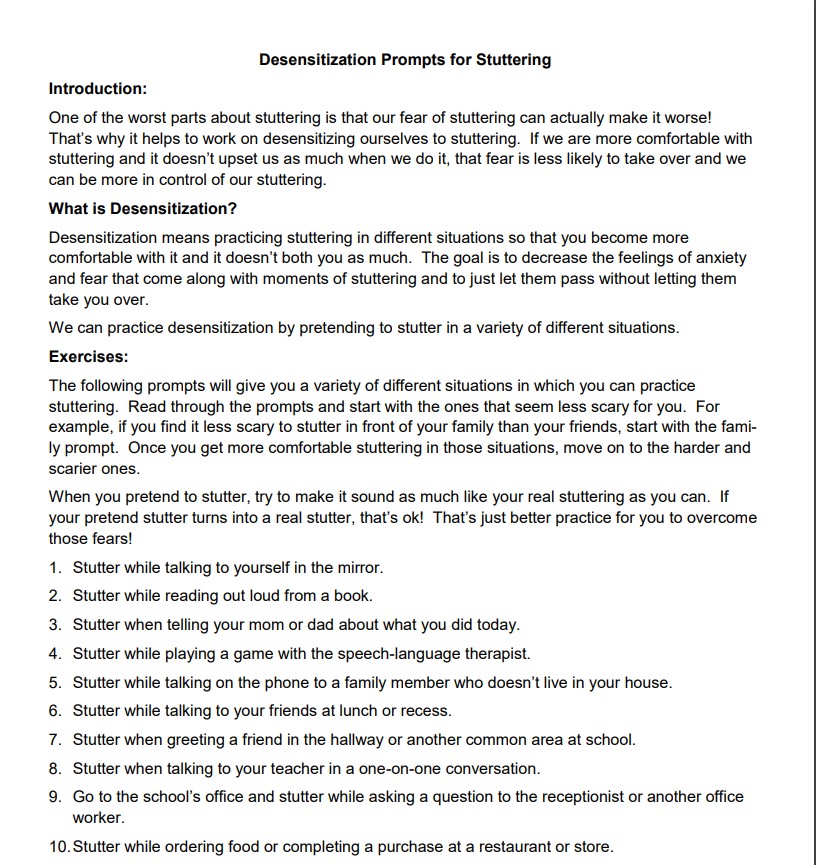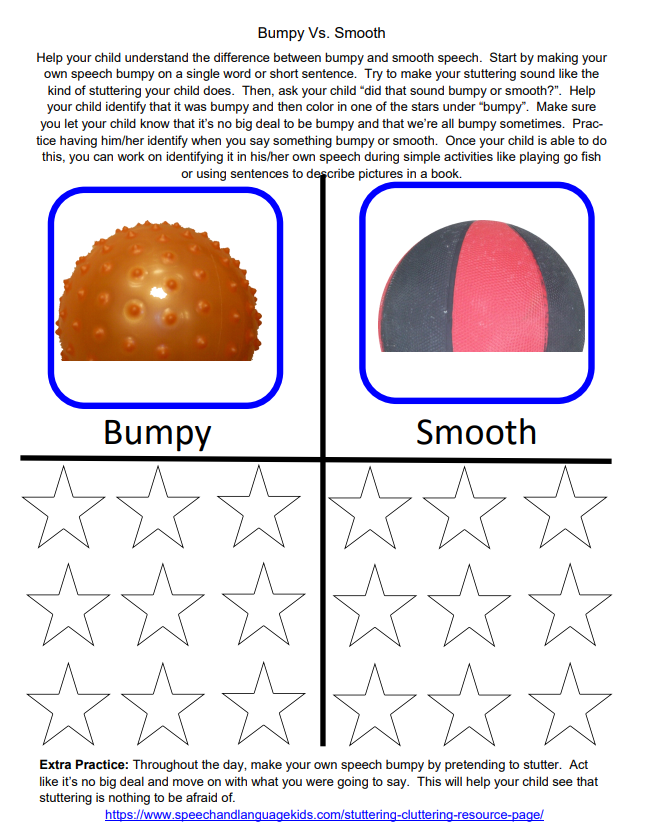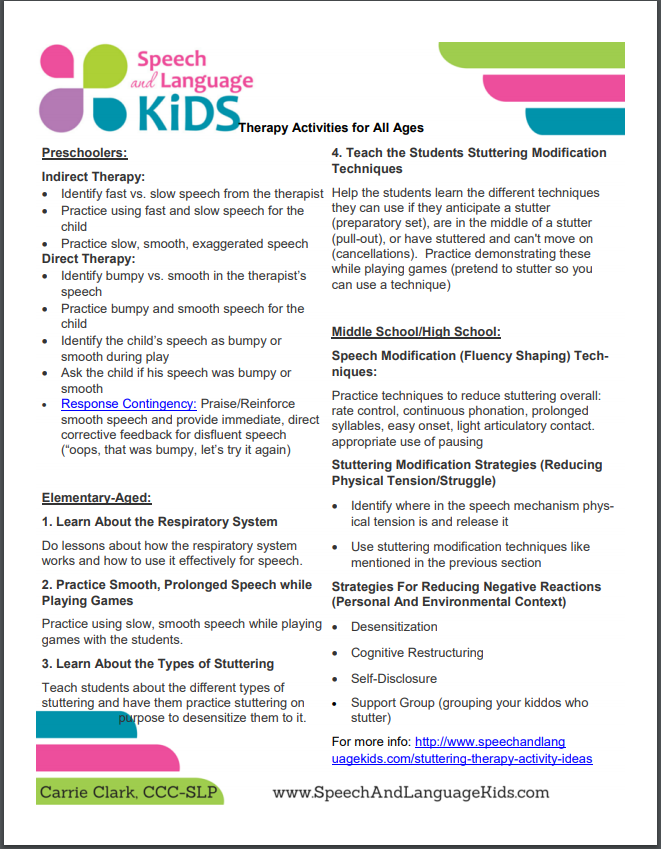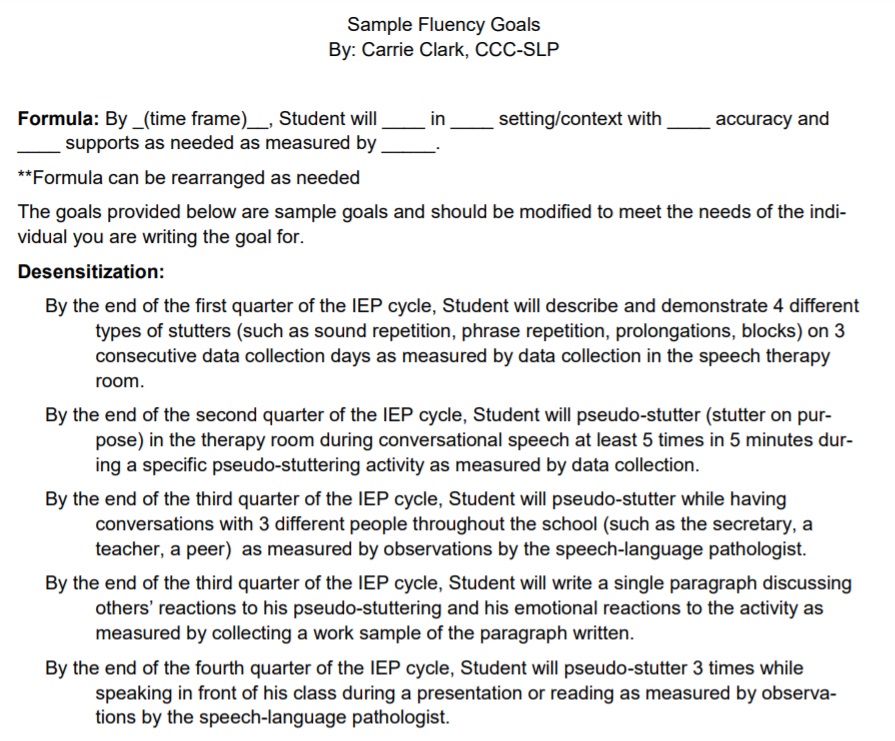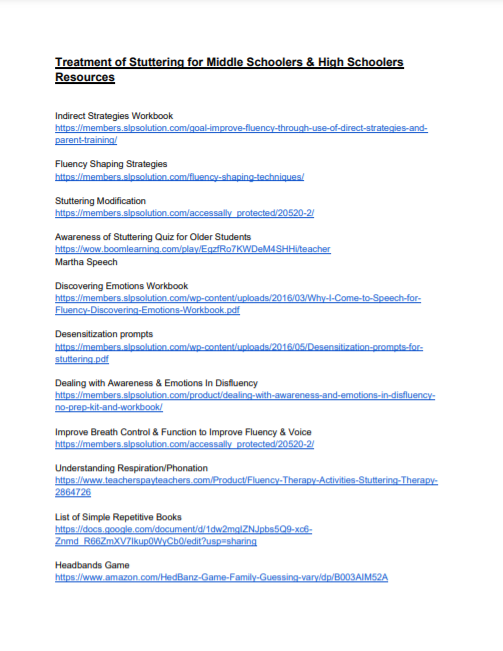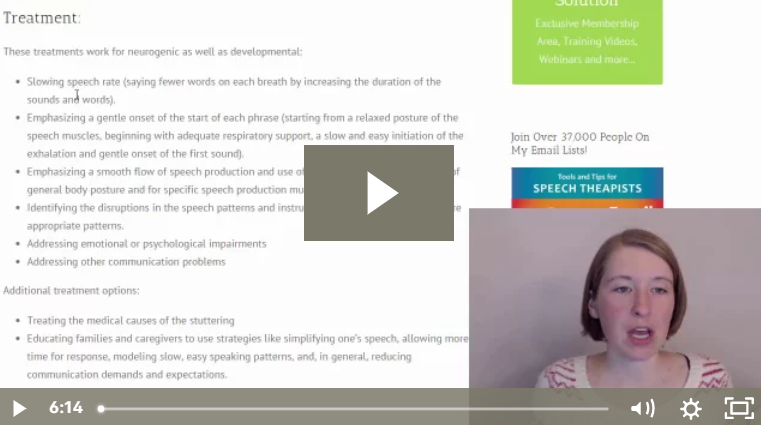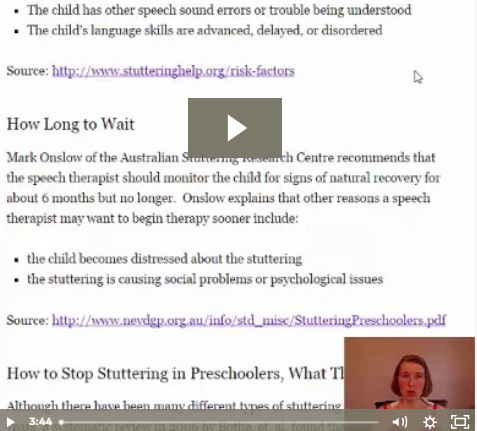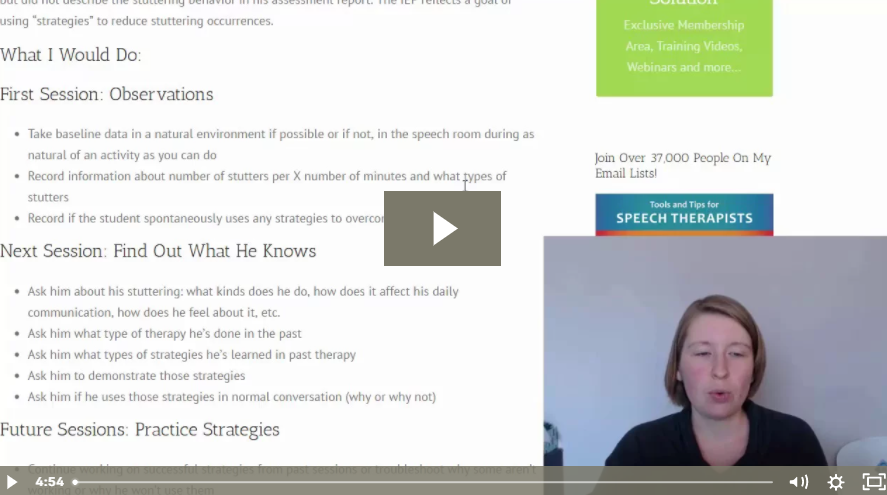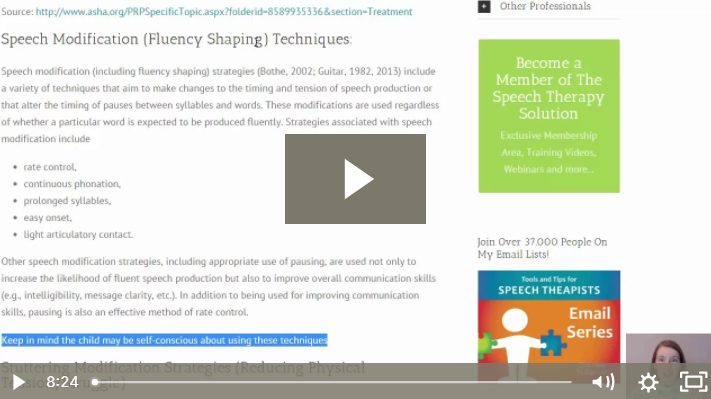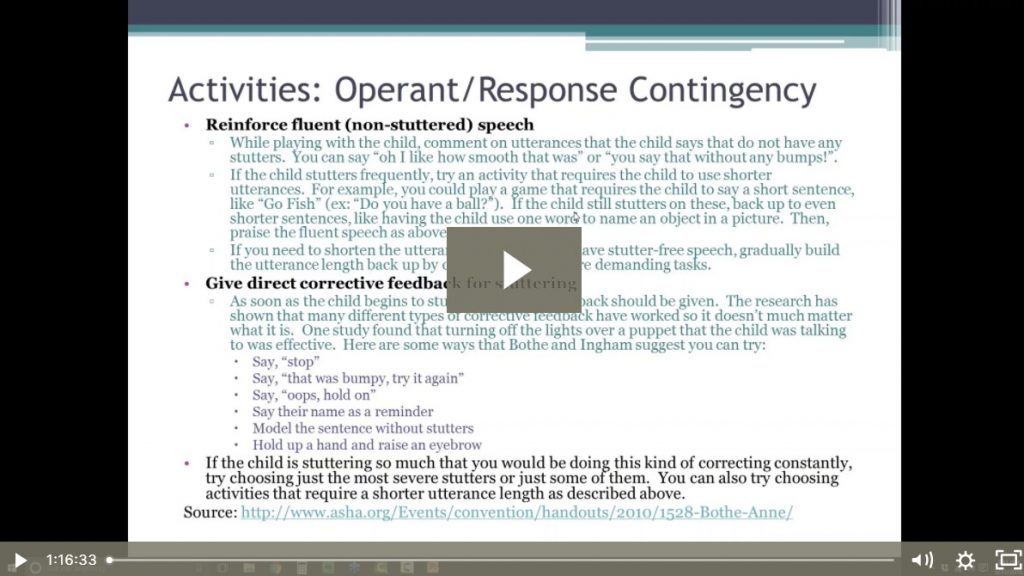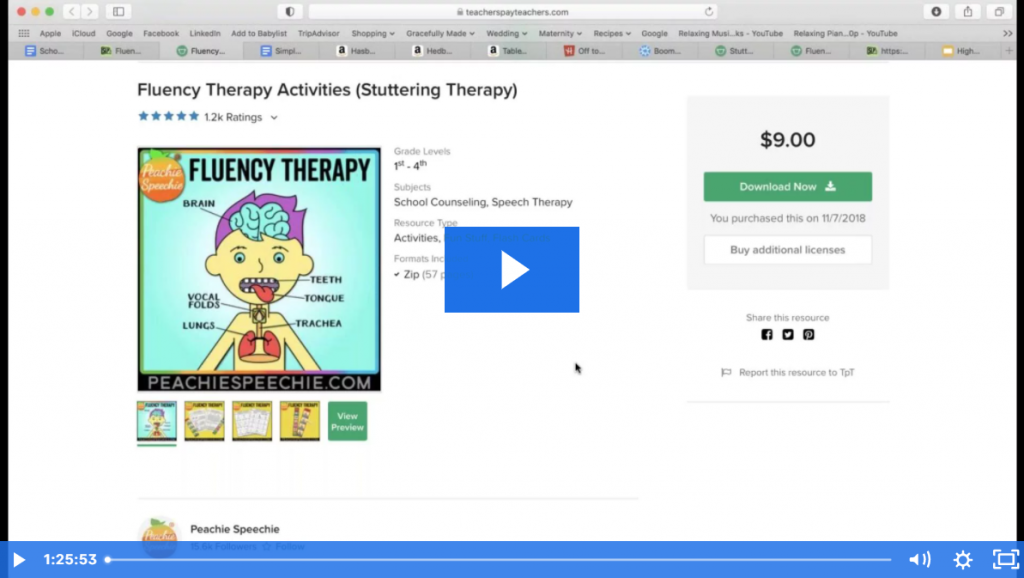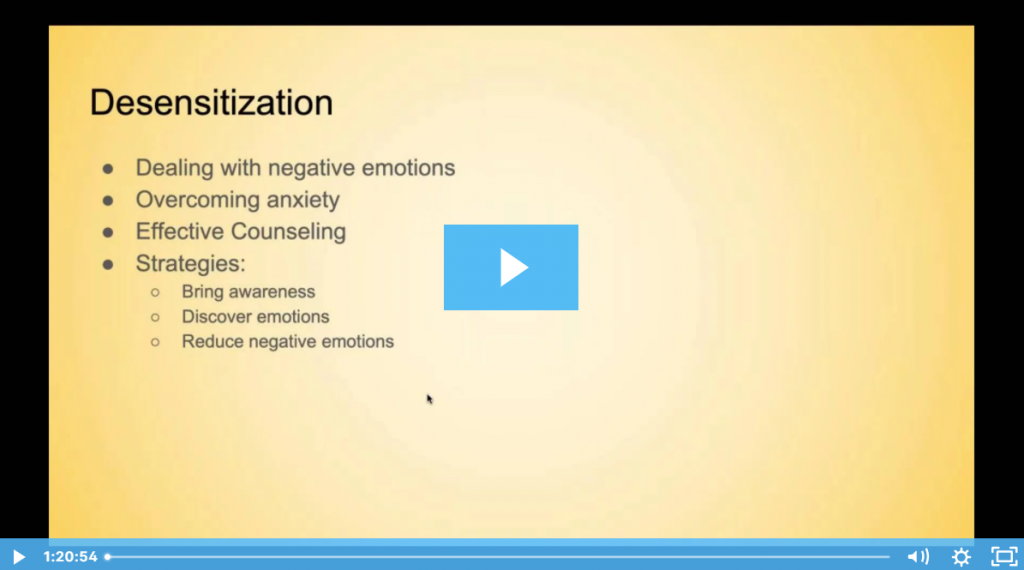Goal: Improve Awareness of Stuttering and Address Negative Emotions about Stuttering
Sample Goal:
There are a few different sample goals that could be included in a plan for a child who stutters. Here are a few ideas to get you started. Make sure you customize these to meet the specific needs of the client. Not all clients will need to address all of these goals.
Awareness:
- After speaking with the clinician for a few minutes, Client will correctly identify whether or not he/she stuttered during that conversation on 80% of opportunities.
- Client will list/demonstrate 3 different types of stutters/disfluencies that he/she regularly has.
- Client will list 3 situations/triggers which make his/her stuttering more frequent and 3 situations/conditions that make his/her stuttering less frequent.
- By the end of the IEP cycle, Student will have participated in guided activities from each of the following four strategies for addressing negative thoughts and feelings related to stuttering: cognitive restructuring, desensitization, self-disclosure, and counseling/support groups.
Download the No-Prep Therapy Kit:
We have a start-to-finish therapy kit that will give you everything you need to practice this skill in therapy and send home homework. Click the packet below to open it. Then, print it out and place it in the child’s notebook or binder.
Therapy Phases:
Awareness:
- After speaking with the clinician for a few minutes, Client will correctly identify whether or not he/she stuttered during that conversation on 80% of opportunities.
- Client will list/demonstrate 3 different types of stutters/disfluencies that he/she regularly has.
- Client will list 3 situations/triggers which make his/her stuttering more frequent and 3 situations/conditions that make his/her stuttering less frequent.
- In order to determine any underlying negative thoughts or emotions that may be impacting Client’s fluency, Client will participate in a guided discussion with the therapist to identify his/her thoughts and beliefs about himself/herself, communication, and his/her stuttering.
- Client will participate in cognitive restructuring activities by identifying 3 negative thoughts and attitudes about stuttering and restructuring those thoughts into positive ones and speaking the restructured thoughts out loud.
- Student will participate in desensitization activities by pseudo-stuttering in at least 4 different environments (therapy room, at home, classroom, hallway, etc.).
- Student will participate in self-disclosure activities by writing a script for telling someone else that he/she is a person who stutters and saying the script to at least 3 other people.
- Student will participate in at least one counseling or support group activity of his choosing, such as talking to someone else who stutters or speaking with a counselor about specific issues.
Therapy Activity Suggestions:
The first thing that must be accomplished in therapy is for the client to understand stuttering and identify that he himself is stuttering. The client’s awareness of his stuttering at the onset of therapy will determine what this step looks like. Some children may have no awareness of their stuttering at all. Other children may think that their stuttering is significantly worse than it really is. You need to meet the child where he is and help bring him to an objective, accurate view of his own stuttering.
If the child has no awareness at all, begin by having him identify dysfluencies in your speech first. Talk about the different kinds of dysfluencies using the list below. Demonstrate these for the client and have him practice them so he knows what they feel like as well.
Click Here to Download the “Types of Dysfluencies Page”
As the client is able to identify these dysfluencies in your speech, encourage him to do so in his own speech. He may need to listen to recordings of him speaking to identify it clearly at first.
If a child is overly sensitive to his stuttering and believes that the problem is far worse than it really is, you may, again, need to do some work with recordings. Help him hear that the dysfluencies are not so often or so debilitating as he thinks. Help him interview those closest to him about how much his stuttering impacts how well they understand him.
Help your client come up with a list of the different types of stutters that he uses in addition to the triggers he has. These would be situations or events that cause him to stutter more. This level is all about bringing a very basic awareness of the stuttering that the child is exhibiting.
Now we need to look at the negative emotions that stuttering may bring up in a child. You can ask the child what types of emotions he has directly, but he may not be able to give you great answers to this question just yet. Some children shy away from talking about their stuttering and others are so oblivious to it that they don’t even realize what types of emotions they experience.
Here is a great packet of questions that will help you gently guide the client through some self-discovery about what negative beliefs and emotions are dwelling below the surface:
Click Here to Download the “Discovering Emotions with Stuttering” Packet
Now we need some strategies to address those negative beliefs and emotions that you identified earlier. Some of them, you will be able to address with some simple education. For example, if a child has misconceptions about the cause of his stuttering (like, if he thinks it’s because he’s dumb), then you can do some great education about the causes of stuttering.
Other negative beliefs and emotions will be harder to overcome. Here are some research-proven strategies for tackling some of these:
Desensitization:
- Identify the types of stuttering that the student uses
- Have the child practice those stutters in the speech therapy room (pseudo-stutter)
- Gradually increase the anxiety level of the speaking situations:
- Bring new people into the room/activity
- Move your conversations to more stressful rooms in the building
- Have the child pseudo-stutter when talking to others around the school (go for a walk)
- …when talking to friends at school
- …when answering a question in class
- …when giving a presentation at school
Click Here to Download the Desensitization Prompt Worksheet
Cognitive Restructuring: change the way they think about themselves and their speaking situations; they learn to identify the thoughts underlying their negative attitudes and emotional reactions and examine the link between their thoughts, attitudes, and emotional reactions and their speech.
- At first, acknowledge all feelings as legitimate and OK
- Then, identify to yourself any misconceptions or negative reactions that are impacting the child’s ability to speak fluently
- Address each negative thought/reaction by helping the child restructure or get better perspective on the issue
- Examples:
- If the child thinks he stutters because he’s dumb, explore the research on the causes of stuttering
- If the child thinks that his friends hate talking to him because of his stutter, help him interview his friends about his stuttering
- If the child thinks that he will never be able to hold a job because of his stutter, help him interview adults with stutters who have awesome jobs
Self-Disclosure: communicating to others information that reveals one’s identity as a person who stutters. Can involve revealing that identity directly, talking about stuttering or treatment of stuttering, explaining or interpreting symptoms of stuttering, providing advice on how to respond to someone who stutters, or, in the case of school-age children, advertising through a classroom presentation with the guidance of the SLP or classroom teacher
- Help the child prepare several different ways to self-disclose his stuttering to others. Create a notebook or resource he can refer back to when needed.
- Presentation that he could give to his class (if he wanted to)
- Information sheet/handout that he can give to new teachers with a few talking points that he can bring up with them
- A short explanation that he can memorize and tell to new peers to talk about his stuttering
- Responses to common questions that he gets about his stuttering
- Links that he can save on his phone to show peers great information on stuttering or examples of famous people who stutter
- If the child likes to joke about his stuttering, help him prepare some good-natured jokes about stuttering to help ease the tension. Keep in mind that many children will not feel comfortable with this so this would ONLY be for children who are already drawn to approach this situation in this way.
Connect with Support and Counseling:
- Connect students who stutter with other students who stutter
- Allow them to ask each other about common problems they face
- Pose prompts to the group that will open discussions about the difficulties associated with stuttering
- Bring in counselors or other professionals to talk to the group about big issues, like bullying (or whatever the students are interested in)
Supplemental Materials
Here are some other resources that may help you when working on this skill:
In-Depth Paid Kit and Workbook for Dealing with Awareness and Emotions in Stuttering – $15
This is a more in-depth version of the free no-prep kit available above. This one goes into more depth and has more exercises. Perfect for those students who need to take this more slowly. Click Here to find your 30% off Discount Code for Being a Member!

